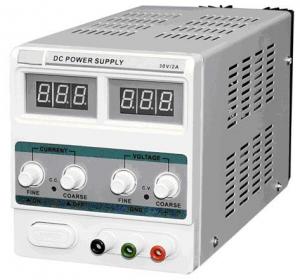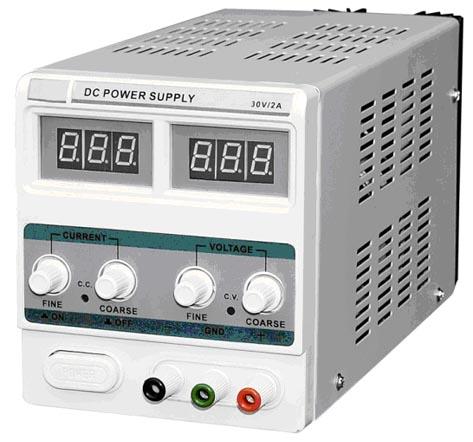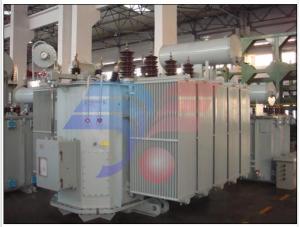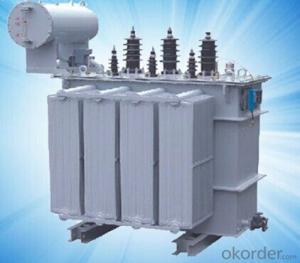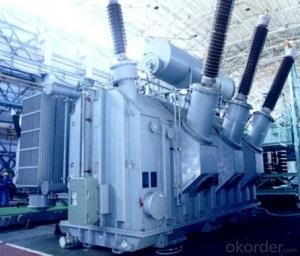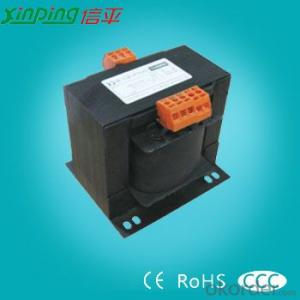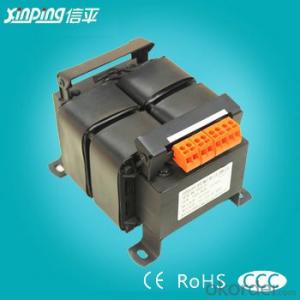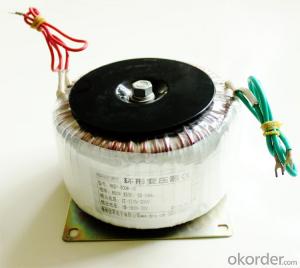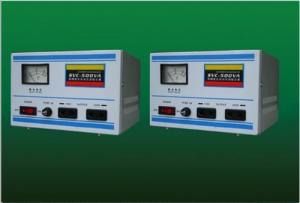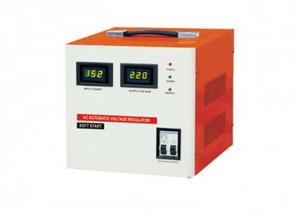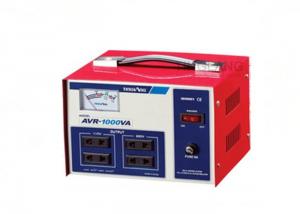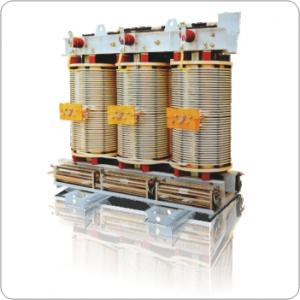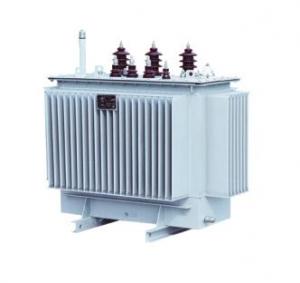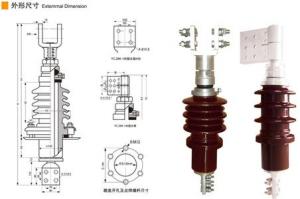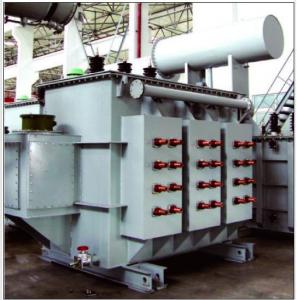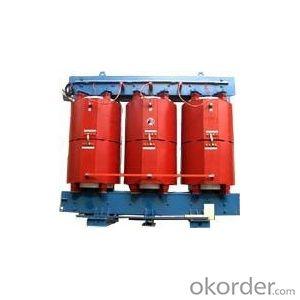SVC LED Automatic Voltage Stabilizer
- Loading Port:
- Shanghai
- Payment Terms:
- TT OR LC
- Min Order Qty:
- -
- Supply Capability:
- 10000pcs pc/month
OKorder Service Pledge
Quality Product, Order Online Tracking, Timely Delivery
OKorder Financial Service
Credit Rating, Credit Services, Credit Purchasing
You Might Also Like
1.Application
SVC(LED) automatic voltage stabilizer consists of contact voltage regulator,sampling control cir-cuit and servomotor as well.It has excellent features,such as small waveform distortion,highefficiency,high power factor,free from the effect or frequency variation of supply.It can bewidely used in most situations where the voltage stabilization is required.
2. Specification
| Input voltage | 150V-250V |
| Output voltage | 220V±3%, 110V±3% |
| Frequency | 50H/60Hz |
| Response time | <1sec.(against 10% input voltage deviation) |
| Efficiency | >90% |
| Ambient temperature | -10oC~±40oC |
| Relative humidity | <90% |
| Waveform distortion | Non-lack fidelity waveform |
| Power factor cos∮ | 0.8 |
| Insutalion resistance | >5MΩ |
3. Outline and packing
| Type | Outline(cm) | Weight(Kg) | Qty/CTN | ||
| L | W | H | |||
| SVC-D500VA | 18.5 | 15 | 12.5 | 17 | 4PCS |
| SVC-D1000VA | 21 | 18 | 14.5 | 20 | 4PCS |
| SVC-D1500VA | 21 | 18 | 14.5 | 25 | 4PCS |
| SVC-D2000VA | 27.5 | 23.5 | 18.5 | 7.8 | 1PC |
| SVC-D3000VA | 29 | 23 | 22 | 9.8 | 1PC |
| SVC-D5000VA | 45 | 24 | 18.5 | 14 | 1PC |
| SVC-D7500VA | 47 | 26 | 22 | 19.5 | 1PC |
| SVC-D10000VA | 47 | 26 | 22 | 24.5 | 1PC |
| SVC-D15000VA | 42 | 38 | 73 | 35 | 1PC |
| SVC-D20000VA | 42 | 38 | 73 | 68.5 | 1PC |
| SVC-D30000VA | 42 | 38 | 83 | 80 | 1PC |
| SVC-D5000VA | 28 | 30 | 46 | 19 | 1PC (Cabinet) |
| SVC-D10000VA | 44 | 32 | 56 | 31 | 1PC (Cabinet) |
- Q: hey Guys. I'm a big fan of Transformer movies. can't wait to see the Transformers-2. Not a real trailer has been released? :( . I would like to know which robots r going to b in the next epic battle?? :)
- Soundwave. Optimus Prime 3
- Q: i just bought transformers Infiltration and Stormbringer graphic novels of idwi know that they are continuing and continue like this1.Infiltration.2.Stormbringer.3.Escalation.4.Devastation.5.Revelation.i wanna know what graphic novels come after these and what is the name of all of these mini series together?
- Megatron Origin is the first story, then Infiltration, Stormbringer, Transformers/New Avengers, Escalation, Devastation, followed by Maximum Dinobots. The Spotlight (Revelation) stories interweave into the main plot as well (4 volumes all together). All Hail Megatron is next, with more Spotlight stories collected in All Hail Megatron vol. 3 4. Then Last Stand of the Wreckers, Transformers Bumblebee, Transformers Ironhide, and Transformers Drift. The ongoing monthly title follows, as of this typing only two paperbacks collecting it are out. Here's the chronological reading order when you get your hands on every paperback: Megatron Origin Spotlight: Blurr Spotlight: Shockwave Spotlight: Cliffjumper Spotlight: Wheelie Spotlight: Hot Rod Spotlight: Sixshot Spotlight: Ultra Magnus Spotlight: Soundwave Infiltration ch.0-3 Stormbringer ch.1-3 Infiltration ch.4-5 Stormbringer ch.4 Spotlight: Kup New Avengers/Transformers Escalation ch.1-2 Spotlight: Ramjet Escalation ch.3-6 Spotlight: Galvatron Spotlight: Optimus Prime Devastation ch.1-4 Spotlight: Blaster Spotlight: Arcee Devastation ch.5-6 Spotlight: Mirage Spotlight: Grimlock Spotlight: Cyclonus Spotlight: Hardhead Spotlight: Doubledealer Spotlight: Sideswipe Maximum Dinobots Spotlight: Drift All Hail Megatron ch.15 Spotlight: Metroplex Spotlight: Jazz All Hail Megatron ch.1-14 16 Spotlight: Prowl Last Stand of the Wreckers ch.1 Transformers ch.1 Last Stand of the Wreckers ch.2-3 Transformers ch.2 Last Stand of the Wreckers ch.4 Transformers ch.3-4 Transformers Bumblebee Transformers ch.5-6 Last Stand of the Wreckers ch.5 Transformers Ironhide Transformers Drift Heart of Darkness The rest following aren't in paperback form yet
- Q: 500KW load should be installed how much transformer?
- Install 630kVA transformer barely enough, it is best to install 800kVA transformer. Because the transformer can not be a long time full load operation, the need for a margin of 0.2, but also take into account the power factor. According to the current capacity of the transformer is only 800kVA level. Down is 630kVA of the. According to 630kVA transformer no-load loss of 1200W, can take the load capacity of 620kW, basically meet the needs of the.
- Q: I have an old xray machine with a large step down transformer.Its not shorted but the paper insulation looks to dry. Is there a special oil for this? Thanks.
- there is no oil for transformers. they are kept dry by all the heat they generate. it cooks the moisture out. if there is a specific reason you are worried, please do tell. is it going to be stored or go unused for a while? is there a lot of moisture in the area of operation? if not, i would not worry about it. it sounds as if it might be near the end of its life cycle as is. on the bright side transformers dont just burn out. there must be a reason for the failure. moisture is not too bad, but water is.
- Q: How can you tell. Is it because (3) wires come off of a single phase transformer? And (4) off of a three phase transformer? Thanks!
- Looking at a transformer intended for mounting on a utility pole, you would see insulating bushings protruding from the metal case. The longer bushing or bushings are the high voltage bushings. The smaller bushings are the low voltage bushings. A single phase transformer would have only one or possibly two of the long high voltage bushings ( typically coming out of the top of the transformer on newer designs intended for mounting on poles typically by a utility ). A three phase transformer would have at least three or possibly four of the long high voltage bushings. All power transformers should also have a Nameplate permanently attached to the case. Primary bushings are typically identified on the nameplate with a H designation such as H1, H2 etc. Low voltage bushing are identified by an x designation such as x1, x2 etc. Make certain that the transformer is NOT energized before attempting to look at a nameplate or come near a transformer. Multiple single phase transformers may be connected into what is called a transformer bank to produce three phase power. At least two single phase transformers are necessary to make a three phase bank of transformers.
- Q: Do stores that sells computers, printers, etc. also sell transformers
- Transformers as in the action figures? You can find them at Toys R Us, Wal*Mart, or Target.
- Q: I found out that rising the frequency of the power going to the primary will rise the output/ secondary voltage. So, if I feed a 60 hz 1:1 turn ratio transformer 100volts at 60 Hz (pure sine wave), the output will be 100 volts. but if I increase the frequency to 400 hz and keep the primary voltage at 100V, (pure sine wave) the output/secondary voltage will go above 100 volts. Or no?
- No. The voltage will not be different. The voltage ratio is proportional to turns ratio not frequency.ratio.
- Q: I just heard from a guy who works with either the electric company or construction that the transformer behind sams club(where i work) caught on fire and its going to be a long term job. The power is out for them, walmart, kohls, and like 10 other large businesses nearby. Anyone have any idea what kinda time frame that would be to fix that? I wanna know if I'm going to be out of a job for a few days or not. Its too late to call and ask. So how long does a transformer take to repair/replace?
- If the transformer belongs to the utility company, then they usually have it replaced within 24 hours. If it is privately owned then it could take a week or more.
- Q: I want to make a simple flyback transformer driver. I have a flyback transformer of samsung CRT monitor. Can anyone give me a complete design of flyback transformer's pin. What are the required components. Please give answer in detail.
- These transformers are designed for TV or monitor line frequency. They use a square wave drive at the line frequency (15625Hz or more for a monitor) The on time is around half the duration of a cycle or more, so 32us for 15625Hz. The driver is a switch, it is on for this time. The current builds as a sawtooth (ramping) current in the inductance of the winding during this time. The design of the driver switch needs to take into account ratings are in the safe operating area (SOA). This means the rate of change of voltage and current, as well as the instantaneous V * I must always be within ratings. It means that the switch should be rapid, so there is minimal time spent in the transition off to on and on to off. There usually needs to be a snubber network to control voltages across the transistor. The pin connections of the transformer? The links below show how to do it basically. It also shows how to check out and identify the windings you need, and also to verify them, using the schematic of the original device if possible. Tracing wires on the circuit board can help too, to identify the primary. You only need to identify 4 pins usually. There are some safety issues here. Some have small internal capacitors that store energy. This can give an unpleasant shock. It could be around 0.2 joules or more because of the high voltage. I am not sure what sort of a hazard this might be, but I wouldn't take it too lightly or use it to shock yourself or others. I assume you are using a 12V DC supply @ a few amps current to power this.
- Q: I really want the transformer but if i buy it i have to wait for shipping. But on the other hand if i buy either one i have to wait 2 weeks for the other.
- killzone 2!!! Is the best FPS game rigth now
Send your message to us
SVC LED Automatic Voltage Stabilizer
- Loading Port:
- Shanghai
- Payment Terms:
- TT OR LC
- Min Order Qty:
- -
- Supply Capability:
- 10000pcs pc/month
OKorder Service Pledge
Quality Product, Order Online Tracking, Timely Delivery
OKorder Financial Service
Credit Rating, Credit Services, Credit Purchasing
Similar products
Hot products
Hot Searches
Related keywords
